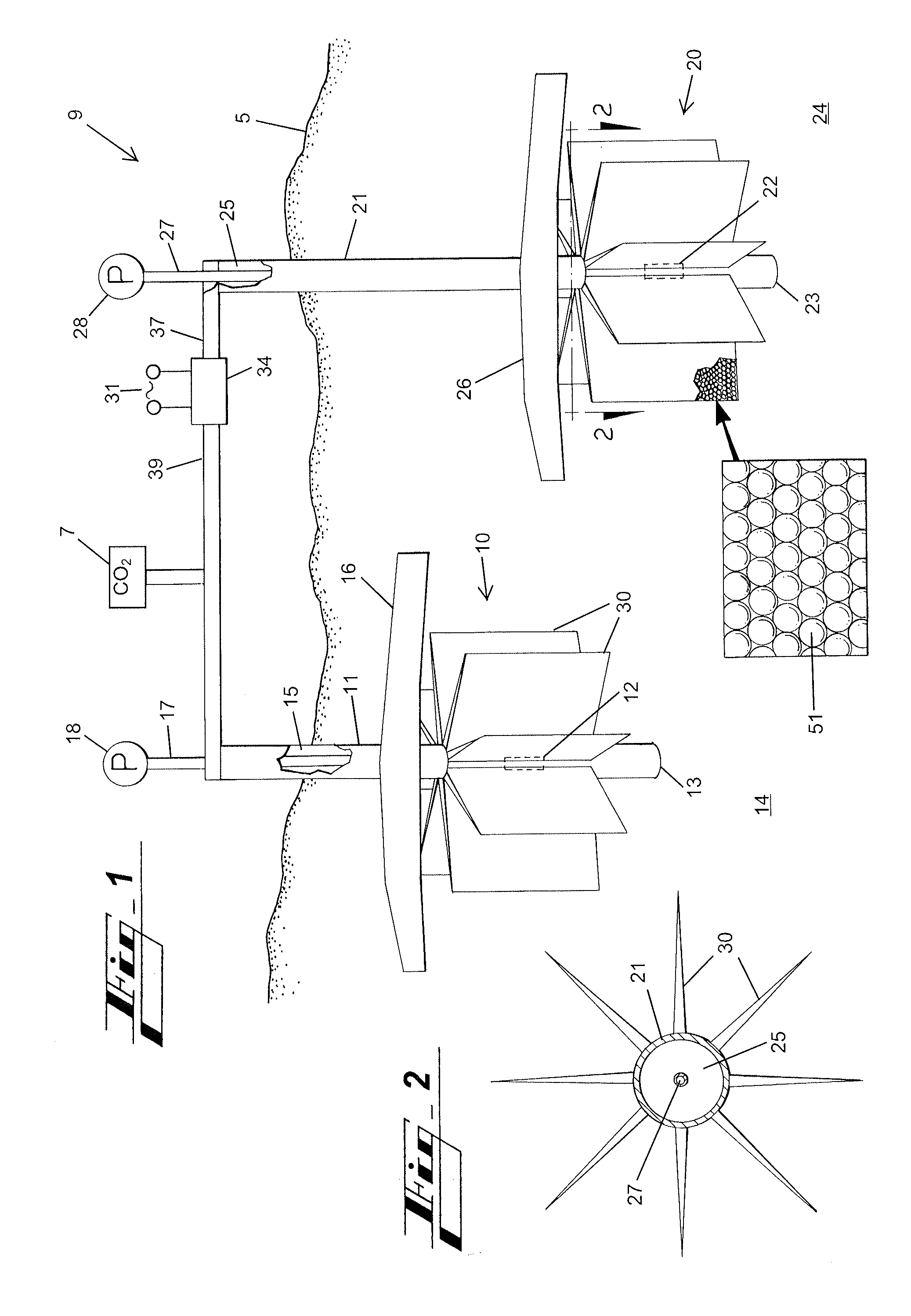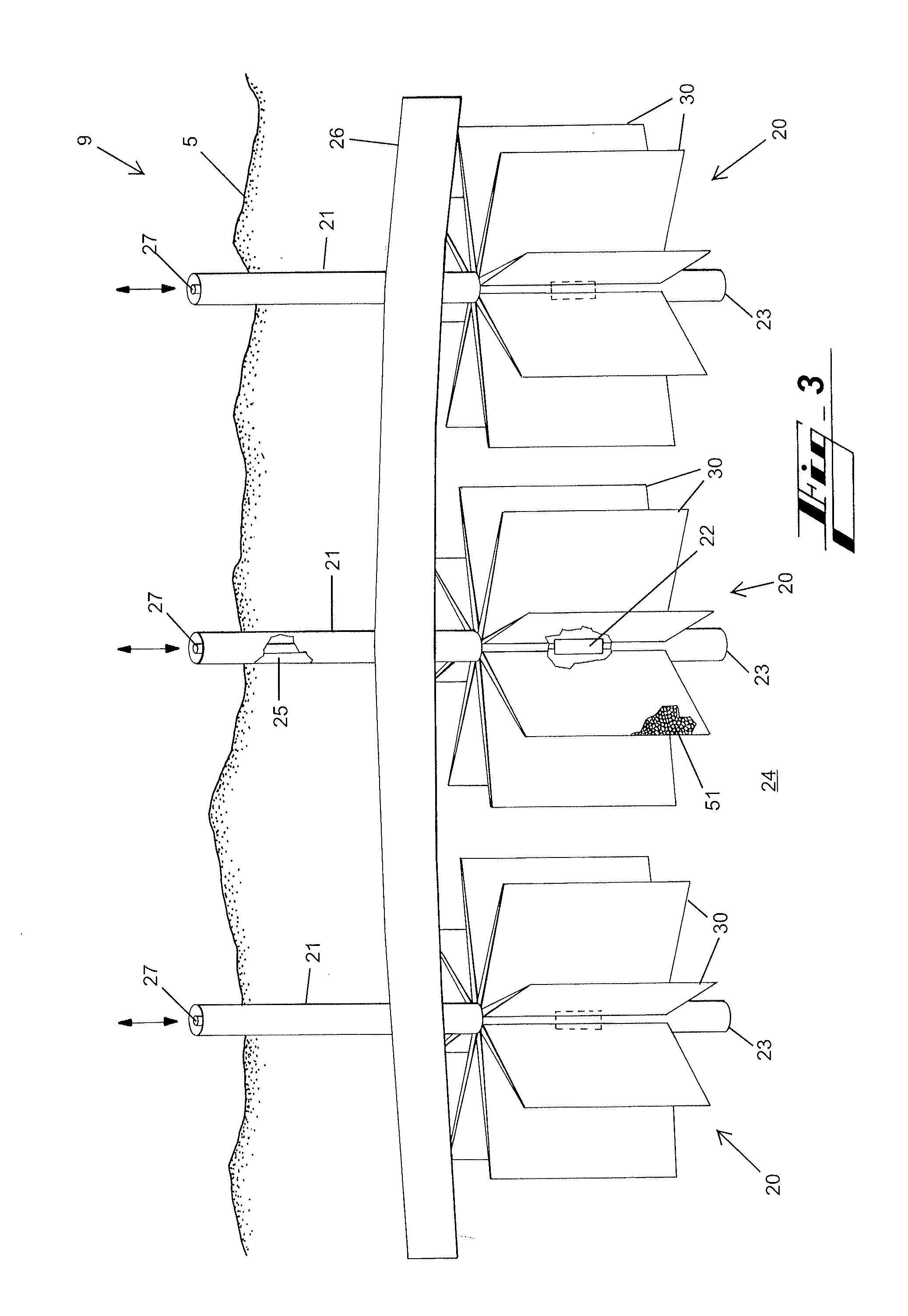Carbon dioxide energy storage and enhanced oil recovery
a technology of carbon dioxide and energy storage, applied in the direction of climate sustainability, insulation, wellbore/well accessories, etc., can solve the problems of inability to meet the requirements of gravity drainage in many reservoirs. , to achieve the effect of enhancing the recovery of petroleum fluids, reducing environmental impact, and reducing the cost of carbon dioxide storag
- Summary
- Abstract
- Description
- Claims
- Application Information
AI Technical Summary
Benefits of technology
Problems solved by technology
Method used
Image
Examples
Embodiment Construction
[0031]Several embodiments of the present invention are described below and illustrated in the accompanying drawings. The present invention is a method and apparatus for the storage of carbon dioxide in subsurface formations, for providing a closed cycle energy storage method for balancing electrical loads on a power grid by transferring carbon dioxide between subsurface hydrocarbon bearing reservoir formations, and for enabling more efficient and economical recovery of petroleum fluids from the subsurface formations by gravity drainage with less environmental impact. Multiple vertical propped planar inclusions at various azimuths are constructed from multiple well casings into oil bearing formations and are filled with a proppant that yields highly permeable planar inclusions that greatly assist gravity drainage as an effective recovery method of hydrocarbon fluids. The installation of the multiple vertical propped planar inclusions enables both the carbon dioxide injection and with...
PUM
 Login to View More
Login to View More Abstract
Description
Claims
Application Information
 Login to View More
Login to View More - R&D
- Intellectual Property
- Life Sciences
- Materials
- Tech Scout
- Unparalleled Data Quality
- Higher Quality Content
- 60% Fewer Hallucinations
Browse by: Latest US Patents, China's latest patents, Technical Efficacy Thesaurus, Application Domain, Technology Topic, Popular Technical Reports.
© 2025 PatSnap. All rights reserved.Legal|Privacy policy|Modern Slavery Act Transparency Statement|Sitemap|About US| Contact US: help@patsnap.com



